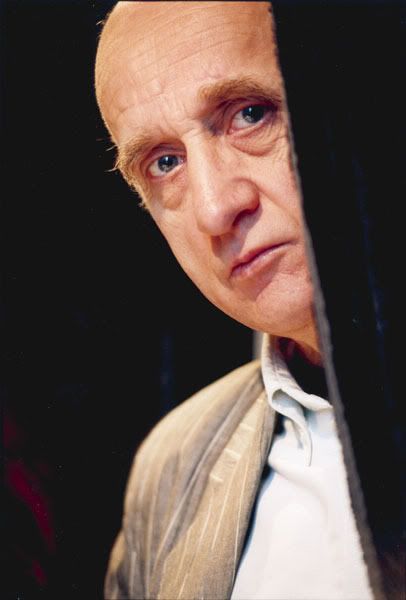
Considerado por muchos el Robert Bresson de la animación, aunque no sean comparables, si bien ambos comparten una misma austeridad, y brillantez, formal, por no hablar de la genial utilización de la elipsis, y del sonido.
Algunos de sus cortos figuran en todas las antologías sobre animación, y en concreto "Afinando los instrumentos" (hasta el momento su obra maestra) se encuentra en todas las listas de las 100 mejores obras de la historia de la animación.
-BIOGRAFÍA:
Jerzy Kucia (b.1942, Poland) was trained as a painter and graphic artist at the Krakow Academy of Fine Arts, where he is currently a professor and the head of the animation department. His first animated film, Return, was completed in 1972, and demonstrates beautifully Kucia's interest in the interplay between reality, memory, dream, and emotion. In Return, although we are observing a rather static, uneventful moment in one man's life (throughout most of the film, we watch him looking out the window of a train as a country landscape rushes by), it is clear that the real action is taking place within the man's (and our own) mental landscape. The regular and rhythmic sound of the moving train, together with the hypnotic night-time scenery sweeping by, enables the viewer to slip into his or her own dreamlike journey.
In the 25 years since his first film, Kucia has revisited this motif and perfected his unique visual language in eight more films, all but one of which utilize a very similar abstract structure to present their themes. The one exception is Reflections (1979), which is Kucia's only film to date that attempts to follow a narrative in the classic sense. Reflections, also about a journey of sorts, follows the laborious struggle of an insect hatching from its cocoon. No sooner than the insect wrests itself from its shell does it become involved in a life struggle with another insect. The drama ends abruptly when both bugs are crushed under a man's shoe. Bleak though the message may be, Kucia manages to draw us once again into a singular, almost microscopic moment of time that is at once dreamlike and poetic, yet grounded in grim reality.
Kucia's most recent film, Across the Field (1992), is his longest and arguably his most complex film in terms of imagery. In it, he applies many of the various techniques he has developed for his films over the years, the result being a rich collage of drawing, photographic images, and live-action film footage whose individual frames he has manipulated. This complex technique exists, according to Kucia, only as a vehicle to evoke the mood and emotion he wishes the audience to experience. This Impressionist approach to filmmaking is no doubt what inspired Marcin Gizycki to dub Kucia the "Bresson of Polish animated film."

“I arrived at animated films as a medium and a way of expressing myself quite by accident.I never intended to be a filmmaker.I studied painting and graphic arts at the Academy of Fine Arts in Kraków.At the urging of some friends,I did some short exercises using animation techniques,and I found that,with the use of time and movement,I could more easily express myself on contemporary matters,on the people around me who were dealing with the same problems I was,on the psychologies of these people,and the painful issues of those times (the end of the 60s). Due to the difficulties in finding production opportunities for my film concepts,and the time-consuming and tiring procedure of making these films,I tried to give up work-ing in this field,but the chance to create using movement and time had turned outto be decisive.Despite all the production difficulties I had during that time,I still make animated films to this day.
Like every young and ambitious artist,I sought my own form of artistic expression, a personal language,a filmic formula.I had a great number of ideas -too many for my financial means and time constraints.
After making The Lift ,I decided on a difficult and painful limitation,on the choice of one path.From then on I have consistently made short films which develop along certain lines,changing in the way that life has changed around me.You could say that in the past 30 years I have made one long film based on the reality which surrounds me.I can ’t say what I ’ve lost in making this decision,in abandoning diverse and appealing ideas.
That period,or ‘path ’ has now perhaps reached its end with the making of Tuning Instruments .”
Jerzy Kucia
Info del autor: http://www.filmpolski.pl/fp/index.php/4132
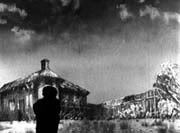 | Powrót | 1973 | 10' |
| Dirigida por: Jerzy Kucia Animación IMDB | |||
Sinopsis: From rumbling in darkness, a body twists in a train compartment, momentarily illuminated by flashes of light. This early film captures mixed feelings of a man journeying back to (his?) decimated city. | |||
| E-Links e Información | |||
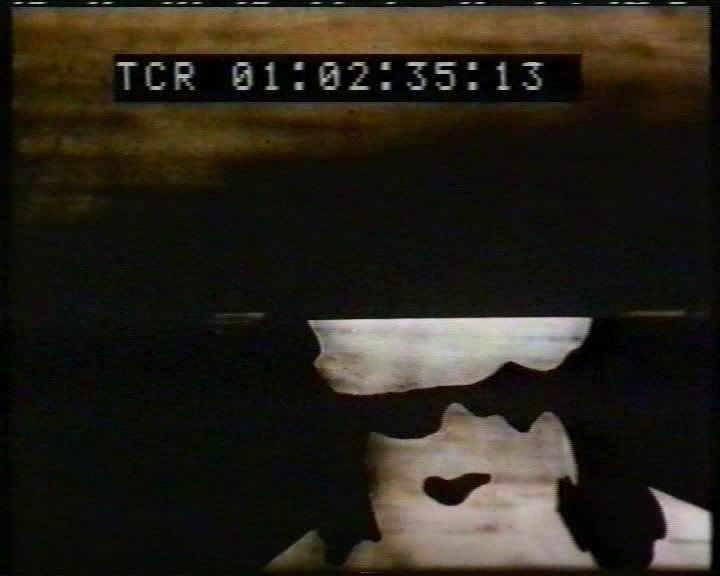 | Winda | 1973 | 6' |
| Dirigida por: Jerzy Kucia Animación | |||
Sinopsis: Cut-up, mixed techniques. A story of a passenger travelling up with a lift. Disconnected memories, devoted from emotions confront with the emptiness of the urban landscape. | |||
| E-Links e Información | |||
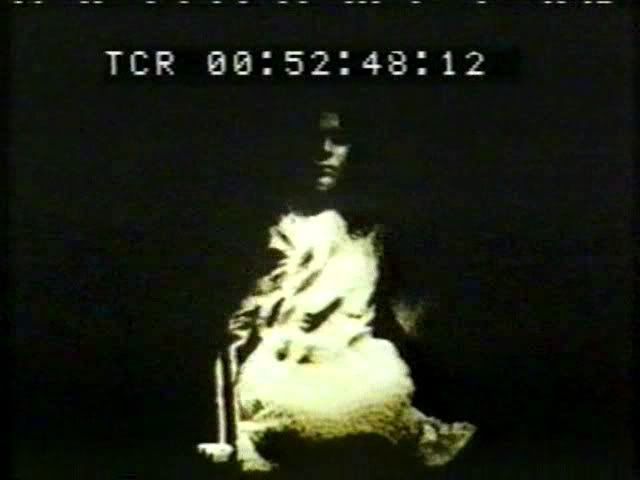 | W Cieniu | 1975 | 9' |
| Dirigida por: Jerzy Kucia Animación | |||
Sinopsis: An animated impression. A girl is playin on the see-saw. Various dramatic memories appear in the rhythym of her movement back and forth. | |||
| E-Links e Información | |||
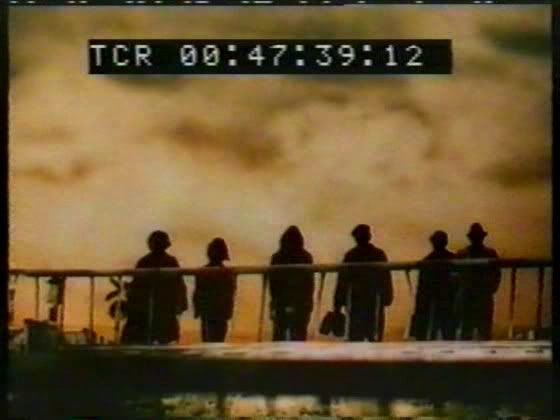 | Szlaban | 1977 | ' |
| Dirigida por: Jerzy Kucia Guión: Ewa Gologórska y Jerzy Kucia IMDB | |||
Sinopsis: Animación. | |||
| E-Links e Información | |||
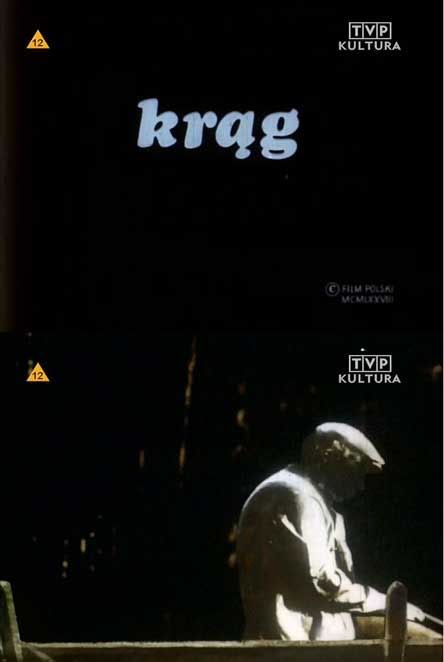 | Krag | 1978 | ' |
| Dirigida por: Jerzy Kucia Animación. | |||
Sinopsis: A pristine new transport-stream recording of Jerzy Kucia's exquisitely beautiful 1978 film, Krag. The film observes the cycle of leisurely activity in the countryside through a visual language of hypnotic semi-abstraction - at first glance all appears calm on the surface, but chaos lurks around the corner. Kucia is a genius of film and animation, and this film comes with my highest recommendation - the painterly beauty and texture of each frame, and the depth achieved with the multi-plane technique, form a work as remarkable as anything I've seen (and special mention must be made of Marek Wilczynski's incredible sonic landscape). Kucia's films are all concerned with capturing the inner life and subjective experience, through atmosphere and mood via expressive abstraction, and they yield more and more with each viewing. Cita de Meniscus en Karagarga.
| |||
| E-Links e Información Hilo en DXC | |||
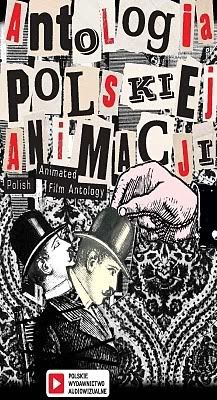 | Refleksy | 1979 | 7' |
| Dirigida por: Jerzy Kucia Animación IMDB | |||
Sinopsis: In sharp monochromatic tones, an insect seemingly too big for its egg struggles into the world. | |||
| E-Links e Información Hilo en CI-Cl | |||
 | Odpryski | 1984 | 11' |
| Dirigida por: Jerzy Kucia Animación IMDB | |||
Sinopsis: ? | |||
| E-Links e Información | |||
 | Parada | 1986 | 15' |
| Dirigida por: Jerzy Kucia Animación IMDB | |||
Sinopsis: The sounds and motions of people, objects and animals are orchestrated into a ‘parade’ in the countryside – repeated actions become meaningful gestures, natural sounds are transformed into music. | |||
| E-Links e Información Hilo en DXC | |||
 | Academy Leader Variations | 1987 | 6' |
| Dirigida por: Jerzy Kucia Jane Aaron Skip Battaglia Guang Xi Chang A. Da Yan Ding Xian Piotr Dumala David Ehrlich Paul Glabicki George Griffin Jinqing Hu Al Jarnow Krzysztof Kiwerski Stanislaw Lenartowicz Claude Luyet Georges Schwizgebel Daniel Suter Martial Wannaz Lin Wen Xiao He Yu Men IMDB | |||
Sinopsis: Original Music by Mieczyslaw Janik Shamms Mortier Animación Produced by David Ehrlich .... producer Film Editing by Manfred Kirchheimer Sound Department Mieczyslaw Janik .... sound | |||
| E-Links e Información | |||
 | Przez pole | 1992 | 18' |
| Dirigida por: Jerzy Kucia Animación Dirección, guión y animación: Regie, Buch, Plastiken Jerzy Kucia Cámara: Janusz Wierciak, Marek Wylon Música: Marcin Krzyzanowski Producción: Jerzy Kucia Filmproduktion, Kraków IMDB | |||
Sinopsis: Prez Pole (A través de los campos) es, hasta el momento, la película más larga y más compleja a nivel simbólico de Jerzy Kucia. Para esta película Kucia y su mujer Ewa, colaboradora habitual en todos sus trabajos, invirtieron más de cinco años de trabajo creando 16.000 dibujos que fueron posteriormente manipulados y dieron lugar a un film casi impresionista y sin argumento aparente que transforma un vulgar paseo por el campo en una especie de viaje emocional hacia el interior de nosotros mismos. "Me interesan los estados mentales del hombre. Trato de observarle a través de sus experiencias emocionales sus alegrías y tensiones. Trato el cine como un hecho psíquico" J. Kucia | |||
| E-Links e Información | |||
 | Strojenie instrumentów | 2000 | 16' |
| Dirigida por: Jerzy Kucia Animación | |||
Sinopsis: Este corto de 15 minutos carece de historia y si me apuran de contenido. Aparentemente, sigue a un hombre que se levanta por la mañana, sale de su casa y ve cosas. Es difícil encontrar alguna pauta o explicación al corto, ni siquiera el más retorcido simbolismo. Bellamente animado y dibujado, y con una trabajada banda sonora de instrumentos afinándose y ruidos casi al azar, recuerda a ratos al estilo de Yuri Norstein (por los colores, las sombras, la difuminación), a los hermanos Quay (por el "sentido" totalmente oscuro de las imágenes) y a Norman McLaren (por algunos momentos de pura sincronización entre música y pintura). Ha ganado muchos premios y el crítico Giannalberto Bendazzi lo ha considerado una obra maestra. Jerzy Kucia es un animador polaco que comenzó en los 70 y tiene reconocido prestigio.
| |||
| E-Links e Información Hilo en DXC | |||






